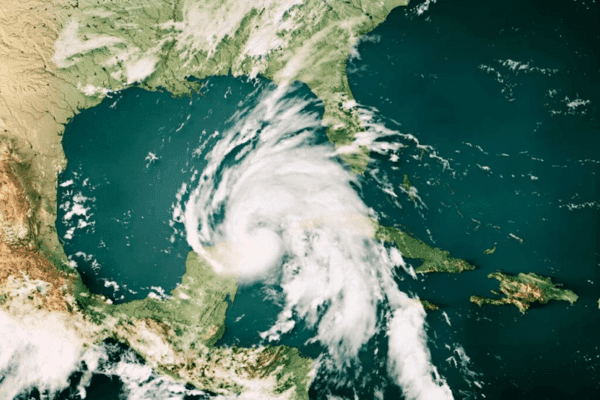The complimentary Starlink service that Elon Musk and SpaceX pledged to provide for communities affected by Hurricane Helene in the United States is not entirely without cost, as reported by residents in the impacted areas and indicated on the internet satellite operator’s registration page. A notable condition exists: individuals are still required to cover the expenses associated with the necessary hardware.
Last week, Starlink’s Twitter account announced in a post that garnered tens of millions of views that “Starlink is now free for 30 days.” Following this, the world’s wealthiest individual, whose net worth is around $260 billion, made a significant public relations statement, indicating that all Starlink terminals would now function automatically “without [the] need for payment in the regions impacted by Hurricane Helene.”


However, if one attempts to register for the supposedly “free” service in a region that Starlink has classified as a Helene disaster zone, one will find that a payment is still required for the terminal. The standard cost is $350, but it has been reported to be reduced to $299 for disaster relief purposes, a discount that is not indicated on Starlink’s signup page. When factoring in shipping and tax, the total amount comes to nearly $400.
The video provided below illustrates the situation clearly. By entering the address of the city hall in Boone, North Carolina, an area severely impacted by the devastating superstorm, it becomes evident that individuals recovering from the disaster are still anticipated to pay hundreds of dollars for the supposedly complimentary month-long Starlink service. While this assistance is certainly preferable to having no support at all, it falls short of the humanitarian aid that was initially advertised and celebrated.
Further examination of the information available on Starlink’s assistance page regarding Hurricane Helene may lead one to perceive it as a strategy to attract new customers in remote areas.
As stated on the Starlink Helene page, new customers who are eligible for complimentary access will be transitioned to a paid residential subscription costing $120 per month, linked to the location where the terminal was installed, after a period of 30 days.
An examination of the information available on Starlink’s assistance page regarding Hurricane Helene may lead one to suspect that it is a strategy aimed at attracting new customers in remote regions.
The Starlink Helene page indicates that new customers eligible for complimentary access will be transitioned to a paid residential subscription of $120 per month, linked to the location where the terminal was installed, after a period of 30 days.
In contrast, existing customers who possess a dish and seek to have their fees waived due to the disaster must submit a support ticket, which Starlink will review for potential waiver approval at a later date. This process is not as straightforward as Elon Musk’s assertion that all terminals in the impacted areas would receive service “without the need for payment.”
According to Kinney Baughman, a resident of Boone, the offer seems to be more of a “crafty, bait and switch … intended to exploit individuals rather than assist them.”
In an interview with The Register, Baughman, who is both a philosophy professor and an IT professional, shared his observations regarding SpaceX’s Starlink following the restoration of power after Helene. His assessment is decidedly unfavorable.
Baughman mentioned that after Elon Musk announced the free service offer, he received inquiries from friends about the value of signing up, to which he responded affirmatively, albeit with certain limitations.
“There may be specific situations where what [Musk] is proposing could be beneficial,” Baughman stated. “However, these instances are likely to be rare, such as when someone is located in a remote area without cell service, and where flooding has damaged their fiber connection. In such scenarios, it could take months to restore service, making Starlink a potential option worth considering.
Baughman emphasized that this situation is an exception. By the time Starlink becomes available to others, conventional internet services may already be operational, potentially leading individuals to incur costs for a satellite service that is unnecessary.
“If UPS can deliver the Starlink receiver to your residence, your circumstances are not too dire,” Baughman remarked. Therefore, if you are able to receive that terminal, it may no longer be essential by the time it arrives within Starlink’s estimated 2-3 week delivery period.
Moreover, one must consider the requirement for power to operate the device.
“Even if someone manages to navigate one or more damaged bridges to obtain the device, they will still need electricity to use it,” Baughman pointed out. “Thousands remain without power, and many of those lack a generator.”
Baughman critiqued Musk’s proposal, stating that it is marketed to a wide audience with the promise of free internet. However, he argued that it is not genuinely free, characterizing it as “a play on the desperation” of North Carolinians who are still in the process of recovery, and merely a public relations strategy with little substance.
“When someone claims they will provide free internet, it creates a frenzy among people,” Baughman observed. “Starlink is appealing to the emotions of those who are struggling in the aftermath of disaster.”
- Best Headphones of 2024: A Personal Review with Insights and Pricing
- Deepfake Technology Examples: What You Need to Know
- Quantum Computing Made Simple: A Major Breakthrough in Stability
- Apple’s New AirPods Update: Control Your iPhone with Just a Nod
- Stay Safe Online: Learn How to Spot and Avoid Scams
- What Are FPV Drones? Everything You Need to Know About This Thrilling New Tech

